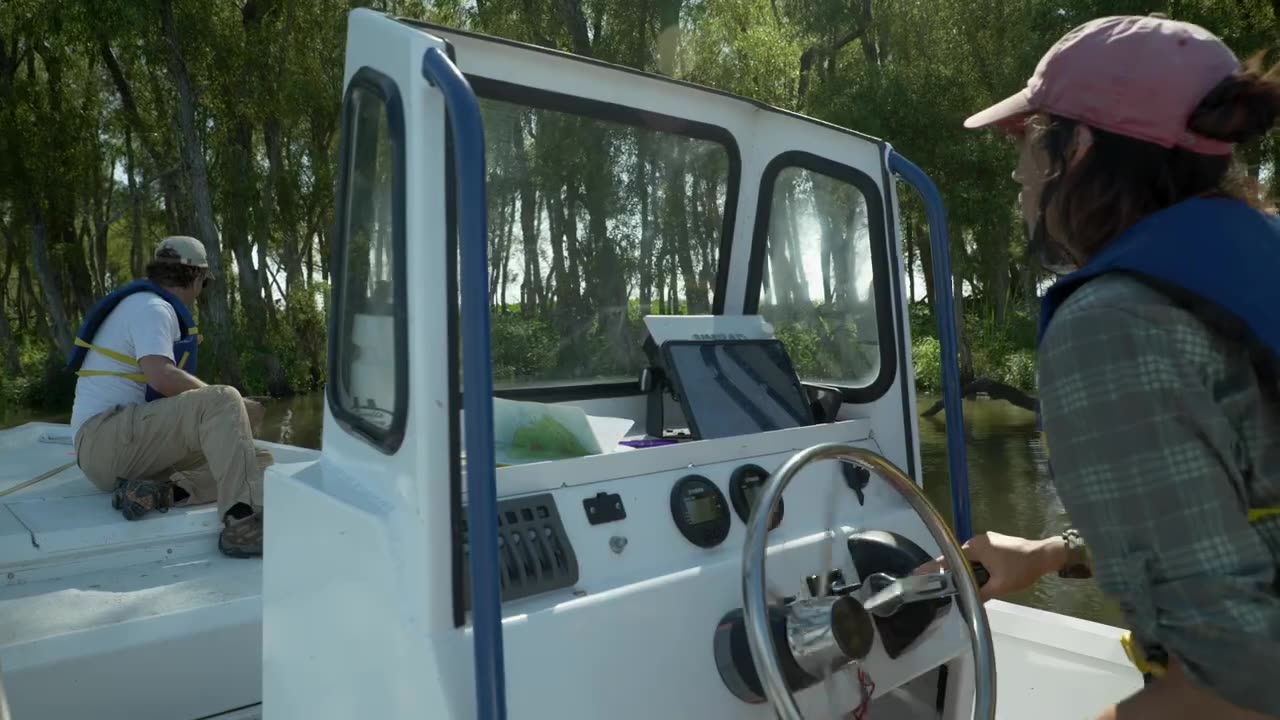Premium Only Content

science satellite will help cummunities plan for the better future
NASA information
Introduction: Begin with a brief introduction to the video's subject matter. Mention NASA and any specific mission or project featured in the video.
Summary: Provide a concise summary of what viewers can expect to see in the video. Highlight the main events, discoveries, or moments.
Key Information: Include essential details such as the date of the mission or event, the location in space, and any spacecraft or instruments involved.
Scientific Significance: Explain the scientific importance or significance of the video. Discuss how it contributes to our understanding of space, planets, or the universe.
Educational Value: Mention how the video can be educational, whether it's suitable for students, teachers, or anyone interested in space exploration and science.
Credits: If applicable, give credit to NASA, the specific mission or project, and any collaborating institutions or researchers.
Links: Include links to relevant NASA websites, mission pages, or additional resources where viewers can learn more.
Hashtags: Add relevant hashtags to increase the video's discoverability, as mentioned in the previous responses.
Call to Action: Encourage viewers to like, share, and subscribe to NASA's official channels for more exciting space content.
Remember to keep the description clear, informative, and engaging to attract a wider audience and promote NASA's educational and scientific missions effectively.
User
Nasa summary english
ChatGPT
Certainly, when summarizing NASA in English, you can provide a concise overview of the agency's mission and goals:
NASA (National Aeronautics and Space Administration) is the United States government agency responsible for the nation's civilian space program and for aeronautics and aerospace research. Established in 1958, NASA conducts a wide range of activities, including space exploration, Earth science research, and the development of cutting-edge technologies.
Key points about NASA:
Space Exploration: NASA is renowned for its exploration of the cosmos, including manned missions to the Moon and Mars, robotic missions to distant planets, and the study of celestial objects.
International Collaboration: NASA collaborates with space agencies around the world to advance space exploration and scientific discovery.
Scientific Research: The agency conducts research to better understand Earth, its climate, and the universe. This includes missions to study climate change, space weather, and the origins of our solar system.
Technological Innovation: NASA drives innovation in aerospace technology, contributing to advancements in aviation, satellite communication, and spacecraft design.
Educational Outreach: NASA places a strong emphasis on education and outreach, inspiring the next generation of scientists, engineers, and astronauts.
Space Station: NASA operates the International Space Station (ISS), a unique laboratory where astronauts conduct experiments in microgravity.
Mars Exploration: NASA has been actively exploring Mars with rovers and landers, seeking signs of past or present life and preparing for future human missions.
Astronomy and Astrophysics: The agency conducts groundbreaking research in astronomy, using telescopes like the Hubble Space Telescope to explore the universe.
Commercial Spaceflight: NASA collaborates with private companies to develop commercial spaceflight capabilities, reducing the cost of access to space.
Overall, NASA plays a vital role in advancing scientific knowledge, expanding our understanding of the universe, and pushing the boundaries of space exploration. It continues to inspire people worldwide with its missions and discoveries.
User
Earth science satellite will help cummunities plan for the better future
ChatGPT
Indeed, Earth science satellites play a crucial role in helping communities plan for a better future. Here are some ways in which these satellites contribute to community planning:
Climate Monitoring: Earth science satellites provide data on climate patterns, temperature changes, and weather events. This information is vital for communities to prepare for extreme weather events such as hurricanes, droughts, and floods, allowing for better disaster management and response.
Natural Resource Management: Satellites help monitor natural resources like water, forests, and agriculture. This data aids in sustainable resource management, ensuring that communities have access to clean water, fertile land, and a stable food supply.
Urban Planning: Satellites provide high-resolution imagery and data on urban growth and development. City planners use this information to make informed decisions about infrastructure development, transportation systems, and land use to create more sustainable and resilient cities.
Environmental Conservation: Earth science satellites monitor changes in ecosystems, deforestation, and wildlife habitats. This information guides conservation efforts and helps protect biodiversity, ensuring a better future for both communities and the planet.
Sea Level Rise and Coastal Planning: With rising sea levels due to climate change, coastal communities face significant challenges. Satellites track sea level rise, enabling coastal planners to develop strategies for protecting communities from inundation and erosion.
Agricultural Planning: Satellite data assists farmers in optimizing crop management, predicting yields, and addressing issues like drought and pest outbreaks. This supports food security and sustainable agricultural practices.
Health and Disease Monitoring: Satellite data can be used to track environmental factors that influence the spread of diseases such as malaria and Zika virus. This information helps health organizations plan and respond to outbreaks effectively.
Energy Efficiency: Satellites monitor energy consumption and the impact of energy production on the environment. This data is valuable for communities aiming to reduce energy consumption and transition to cleaner sources of energy.
In summary, Earth science satellites provide critical data and insights that empower communities to make informed decisions about resource management, disaster preparedness, urban development, and environmental conservation. These tools are essential for planning a better and more sustainable future for communities worldwide.
-
 48:02
48:02
Survive History
17 hours ago $8.11 earnedCould You Survive as a Sharpshooter in the Napoleonic Wars?
68.7K3 -
 12:03
12:03
Space Ice
17 hours agoSteven Seagal's China Salesman - Mike Tyson Knocks Him Out - Worst Movie Ever
50.8K17 -
 11:37
11:37
Degenerate Jay
17 hours ago $17.84 earnedJames Bond Needs Quality Over Quantity From Amazon
110K9 -
 15:23
15:23
Misha Petrov
17 hours agoTrad Wives & Girl Bosses Go to WAR!
81.7K47 -
 2:03:11
2:03:11
TheDozenPodcast
15 hours agoFootball villain fighting the state: Joey Barton
62.8K1 -
 13:18:50
13:18:50
Scottish Viking Gaming
18 hours ago💚Rumble :|: Sunday Funday :|: Smash the Blerps and Vape the Terpes
98.9K8 -
 1:45:00
1:45:00
RG_GerkClan
20 hours ago🔴LIVE Sunday Special - It's Time for World Domination - Civilization VII - Gerk Clan
90.6K28 -
 LIVE
LIVE
Major League Fishing
4 days agoLIVE Tackle Warehouse Invitationals, Stop 1, Day 3
80 watching -
 23:34
23:34
marcushouse
21 hours ago $16.24 earnedBREAKING: Starship Launch IMMINENT – But What’s This SURPRISE Flight 9 Plan?! 🚀🔥
125K18 -
 8:43
8:43
Film Threat
1 day agoTHE MONKEY | Film Threat Reviews
111K4